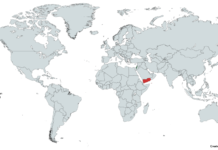The Russian and Iranian transcontinental trade route is a 1,860-mile (3,000-kilometer) passage that stretches from Europe’s eastern edge to the Indian ocean. A Bloomberg article published on December 21st, 2022 reported the news about the building of the passage.
Russia and Iran built a trade route that Western sanctions could not reach. The route, estimated to cost both countries $25 billion, was expected to expedite the delivery of cargo along railways and rivers connected by the Caspian Sea.
According to data from Bloomberg, dozens of vessels from either country are already using the new route. Maria Shagina, a sanction expert, says the goal is to set up a sanctions-proof network that would also see both countries reduce distances by thousands of kilometers from existing routes.
Shagina, of the London–based International Institute for Strategic Studies, says Russia and Iran also aim to build new commercial ties with Asian economies.
Russian firms using the route will find new markets in India, Iran, Africa, and the Middle East, says Russian President Vladimir Putin, and it will simplify the transport of supplies from these nations in return.
The US and its allies, who want to stop the transfer of Iranian drones and other military supplies to help the Kremlin’s war in Ukraine, say any effort to help Russia evade sanctions would be resisted. Moscow is seeking refuge in the East and China to fight Western efforts to isolate it and defy sanctions.
Both Russia and Iran know well that activities along a land corridor are more difficult for the West to track and monitor unlike on sea routes, thus providing them with a sanction-proof route to transport weapons and commodities.
A Russia-Iran-China triangle is seen as a threat because it can easily upset Western interests across Asia, the Middle East, and Central Asia.









